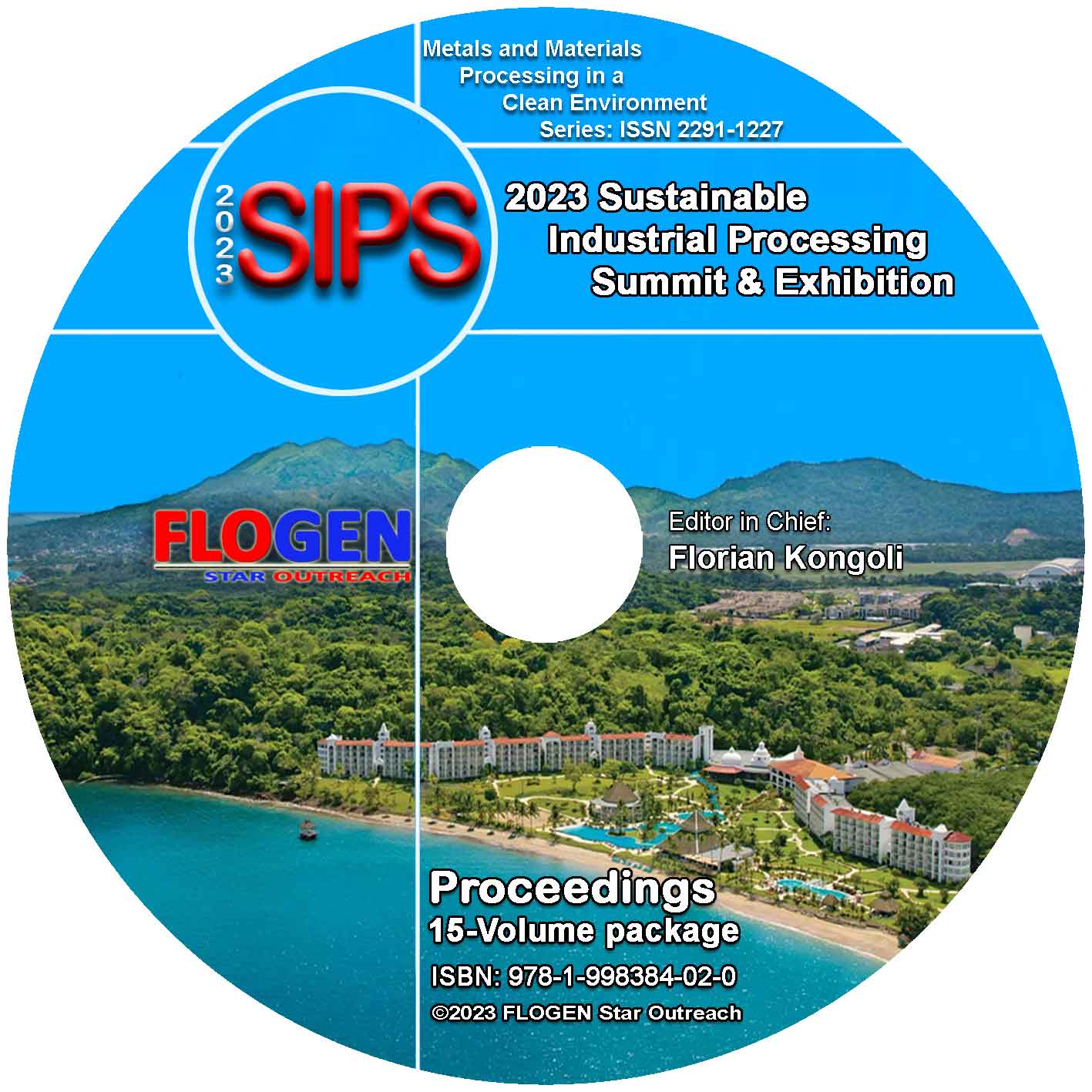2023-Sustainable Industrial Processing Summit
SIPS2023 Volume 15. Intl. Symp on Advanced Materials and Modelling of Complex Materials
| Editors: | F. Kongoli, F. Marquis, N. Chikhradze, T. Prikhna, O. Adiguzel, E. Aifantis, R. Das, P. Trovalusci |
| Publisher: | Flogen Star OUTREACH |
| Publication date: | 21 December 2023 |
| Pages: | 288 pages |
| ISBN: | 978-1-998384-00-6 (CD) |
| ISSN: | 2291-1227 (Metals and Materials Processing in a Clean Environment Series) |

CD shopping page
RECENT ADVANCES IN UNDERSTANDING THE POROUS INTERFACIAL EFFECT ON MULTISCALE FAILURE EVOLUTION IN SHOCKED METALLIC FOAM ASSEMBLY
Zhen Chen1;1UNIVERSITY OF MISSOURI, Columbia, United States;
Type of Paper: Keynote
Id Paper: 168
Topic: 43
Abstract:
To better dissipate energy under transient loading with less solid fraction, shocked metallic foam responses have been investigated with different spatial discretization methods at different scales. Molecular dynamics (MD) and the finite element method (FEM) are representative discrete particle and continuous methods, respectively. The Material Point Method (MPM) is a continuum-based particle method that is formulated based on the weak form of the governing equations in a way like the FEM. Based on the recent research results [Saffarini et al., 2023; Su and Chen, 2023], we are performing a comparative study of shocked metallic foam responses with both MD and MPM to understand the porous interfacial effect on failure evolution in shocked metallic foam assembly. Essential features of the responses at the same spatial scale as obtained with both discretization procedures will be presented in the conference for a representative composite system. It appears from the preliminary study that the MD and MPM solutions are consistent at the same scale. Thus, it might be feasible to compare the MD and MPM solutions for verification in multiscale simulation of extreme events. In addition, the porous interfacial effect might produce the failure evolution similar to the failure wave phenomenon as observed in shocked brittle solids [Kanel et al., 2005]. Further research is required to quantify the failure evolution in metallic solids shocked at different levels.
Â
Keywords:
Materials; Mechanics; Multiscale; SurfaceReferences:
[1] Kanel, G.I., Razorenov, S.V., Savinykh, A.S., A. Rajendran, and Chen, Z., “A Study of the Failure Wave Phenomenon in Glasses Compressed at Different Levels,†Journal of Applied Physics, Vol. 98, pp. 113523-113530, 2005.[2] Saffarini, M., Sewell, T., Su, Y., and Chen, Z., “Atomistic Study of the Impact Response of Bicontinuous Nanoporous Gold as a Protection Medium: Effect of Porous-Nonporous Interface on Failure Evolution,†Computational Materials Science, Vol. 228, No. 112363, 2023.
[3] Su, Y., and Chen, Z., “Study of the Shear-band Evolution across the Interface between Different Spatial Scales,†accepted for publication in Computational Particle Mechanics, 2023.